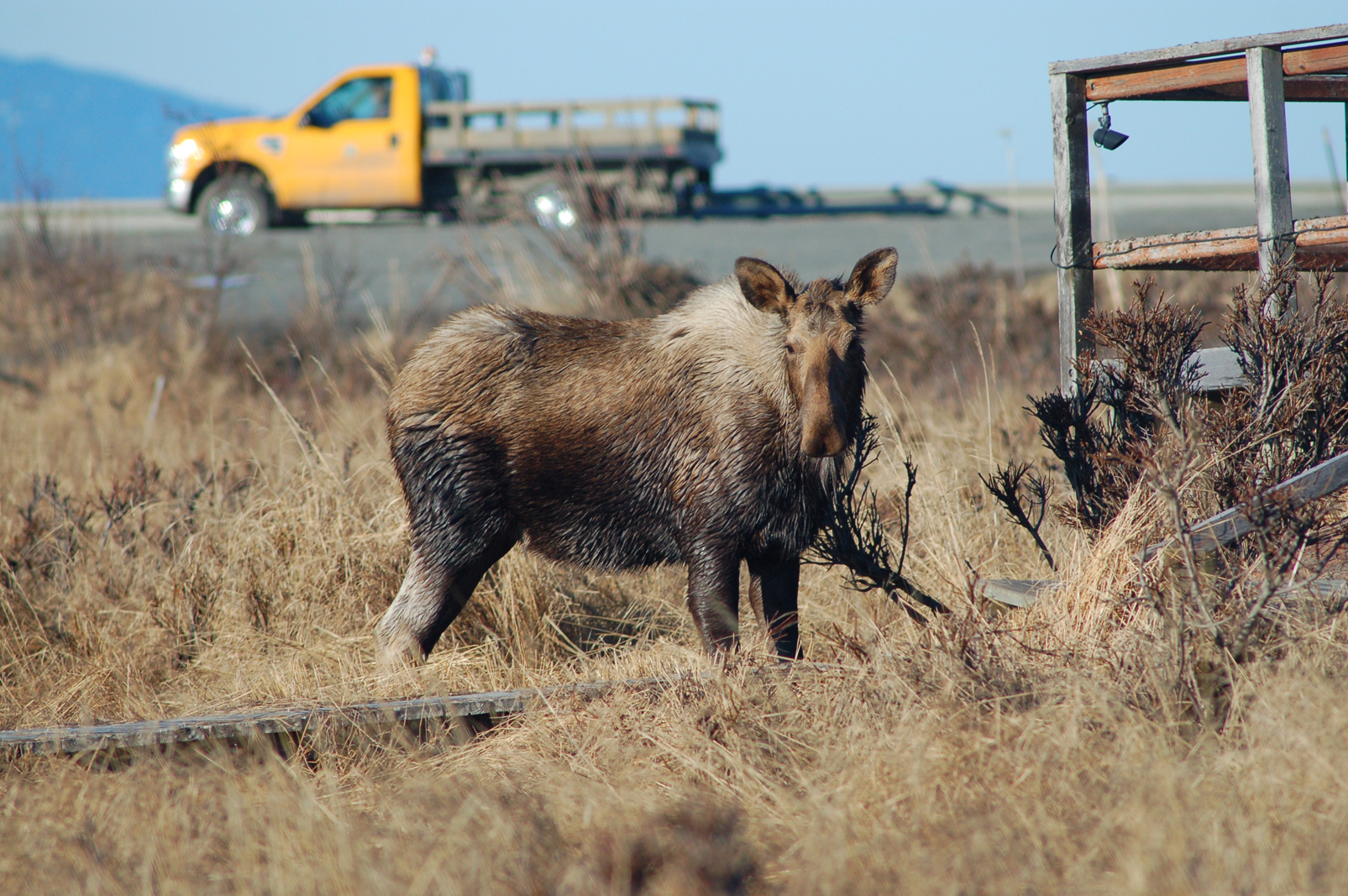It’s 1:30 a.m. when Laurie Speakman gets the call. Alaska State Trooper Dispatch tells her another one has been hit and gives her the GPS coordinates.
Outside it’s probably below zero when she starts the pickup, equipped with a flashing siren, a wench and a boom.
She dresses in thick clothing while coffee brews and the truck warms. Then she drives from a warm bed and sleeping husband to pick up another dead moose from another car accident.
That is a typical call for Speakman, a salvage driver on the Kenai Peninsula for the Alaska Moose Federation. She collects dead moose between Cooper Landing, Ninilchik and Nikiski and drops them in the yards of community members who are on the charity list.
There are three other salvage teams that cover the peninsula.
“We don’t gut them. We don’t skin them. We don’t bleed them out,” she said. “We don’t do any of that stuff. We just load the moose and bring it straight to the charity.”
Since July 1, 94 moose have been hit and killed by vehicles on the peninsula as of Dec. 28, said Jeff Selinger, Kenai area research biologist for the Alaska Department of Fish and Game.
The majority of the deaths occur during the short winter days on the highways that link Soldotna, Kasilof, Sterling and Nikiski, the roads that see a lot of commuter traffic, Selinger said.
In an average year, he said about 250 moose are killed on the roads — a majority of those moose cows and calves. They are attracted to the fresh foliage that grows on the right of ways, he said.
Since Speakman signed on as a driver in April she has salvaged more than 140 moose.
When Speakman drops the moose off, the charities are responsible for the rest — but they used to play a bigger role. Before the salvage drivers, they had to collect the moose themselves.
“We’d have to truck out there and find where it got hit and try to finagle it onto the back of the truck or on the trailer and then take it to where we were going to process it,” said Frank Alioto, a member of a local church on the charity list.
He said it was a difficult process.
“It was always interesting to try to get the people that were part of our road kill ministry team out at three in the morning,” he said, “because everybody says they’ll do it, but they don’t answer their phone.”
It was also dangerous, said Gary Olson, AMF founder and executive director. He said one time, in Anchorage, two grandmothers were learning to butcher a yearling on the side of the fast lane. It took them nine hours, he said.
That taxed police who had to monitor the process, it slowed traffic and it was obviously dangerous to the charities, he said.
“When (the drivers) are called to respond, which typically is at 2 a.m. in the middle of a snow storm, (they are) there for less than 10 minutes,” he said.
Now that Speakman and the three other salvaging teams on the peninsula pick up and deliver, the charities only handle the processing.
“The Moose Federation has made it a whole lot easier to take part in this program and not drive all the way across highways to pick up moose,” Alioto said.
Often about 75 percent of the meat is recoverable, he said, and with reduced hunting opportunities over the past few years, the road-killed moose are a good opportunity for meat.
But that is not the only intent for the program, Olson said.
“The Moose Federation wants to do better than just picking up dead moose off broken cars and hurt people,” he said.
Olson said the program also gathers data to help the Alaska Department of Transportation and Fish and Game prevent further moose-vehicle collisions.
“One of the components here is historically 50 percent of all collisions are calves,” he said, “but when you look out in the woods, 50 percent of the population is not calves.”
About 40 percent of moose hit are cows; 10 percent are bulls, he said.
“So there’s questions that need to be answered, and our continued work with the agencies — through DOT and Fish and Game — will definitely provide a lot of science to these questions,” he said.
Dan Schwartz is a reporter for the Peninsula Clarion.


